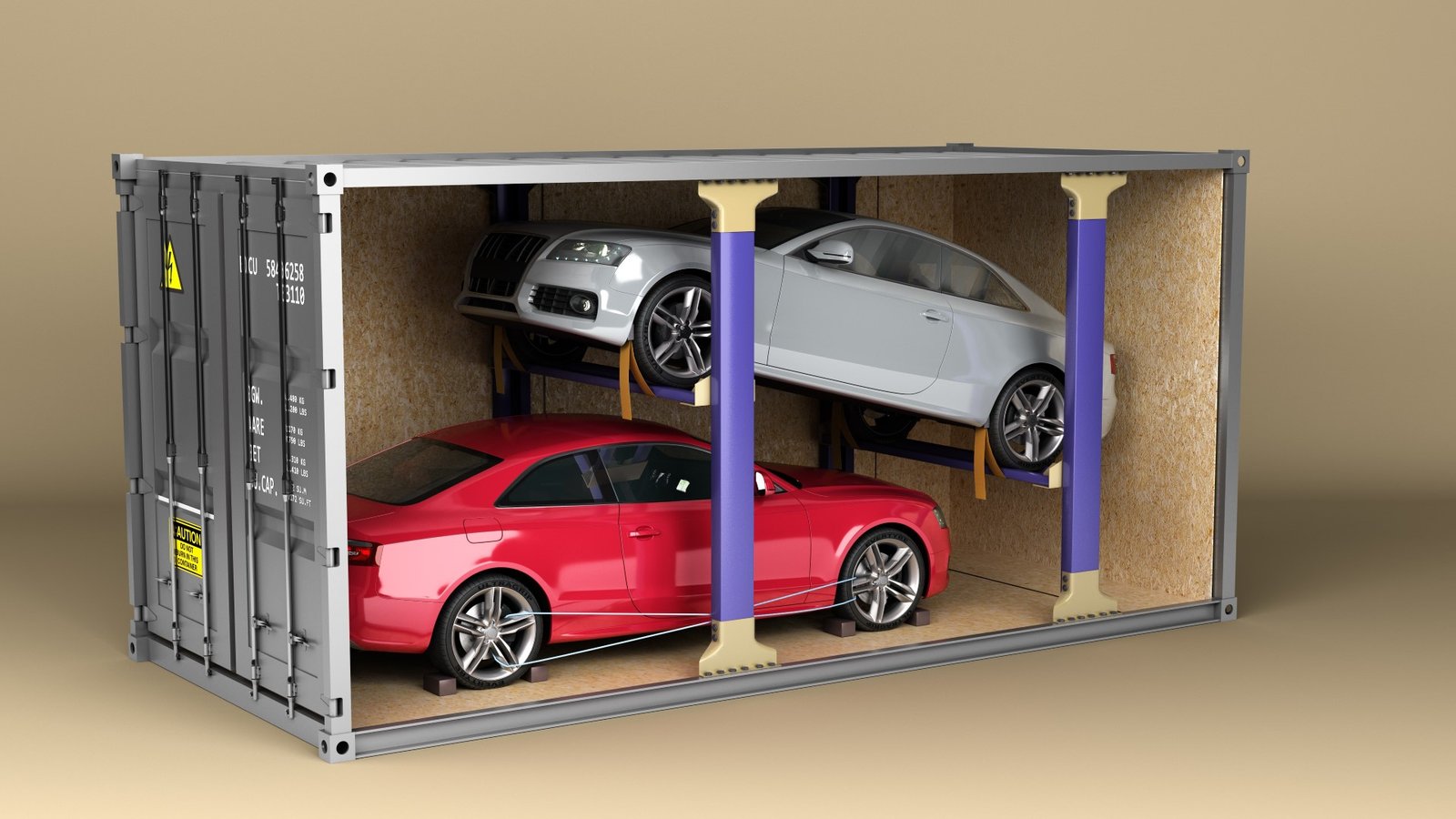Shipping containers are everywhere. They transport goods across oceans and continents. But can they hold something as large as a car? The short answer is yes. However, the details depend on the size of the container and the type of car you’re trying to fit inside. Here’s a closer look at how it works.
Standard Shipping Container Sizes
Shipping containers typically come in two main sizes: 20 feet and 40 feet. There are also high-cube versions that add extra height. A standard 20-foot container measures about 8 feet wide, 8.5 feet tall, and 20 feet long. A 40-foot container doubles the length.
High-cube containers offer an additional foot in height, reaching 9.5 feet. This extra space can be useful for taller vehicles or those that need additional clearance.
Can a Car Fit in a 20-Foot Container?
Yes, but with limitations. A typical sedan or small SUV can fit comfortably in a 20-foot container. The width of the container (about 7.8 feet inside) allows for a standard vehicle width, which is usually around 6 to 6.5 feet.
The challenge comes with larger vehicles. Trucks or oversized SUVs might not fit, or they could require adjustments like removing mirrors or roof racks. In some cases, driving the car into the container isn’t possible, and the vehicle must be lifted in by a crane.
What About a 40-Foot Container?
A 40-foot container offers more flexibility. It can fit two smaller cars parked end to end or one larger vehicle with extra space for additional cargo. This makes 40-foot containers ideal for transporting multiple vehicles or shipping a car along with personal belongings.
Loading two cars into one container often involves building ramps or platforms to maximize space. It’s a practical solution for dealerships or collectors shipping multiple vehicles overseas.
High-Cube Containers for Taller Vehicles
High-cube containers are the go-to choice for taller vehicles like vans, campers, or larger trucks. The extra foot of height can make all the difference. Without it, fitting vehicles with higher roofs might be impossible.
These containers are also great for fitting cars with roof racks or taller suspension setups. If your vehicle exceeds the height of a standard container, high-cube options provide a simple solution.
Preparing a Car for Shipping
Fitting a car in a container is one thing. Securing it is another. Cars need to be properly strapped down to prevent movement during transit. The wheels are often chocked, and heavy-duty straps are used to secure the car to the container floor.
Many shipping companies also recommend draining most of the fuel and disconnecting the battery. This reduces the risk of fire or leaks during transport.
Is It Cost-Effective?
Shipping a car in a container can be more expensive than other methods like roll-on/roll-off (RoRo) shipping, where cars are driven onto a large cargo ship. However, container shipping offers more protection. Your car is enclosed, shielding it from the elements and reducing the risk of damage.
If you’re shipping a high-value car or need to transport personal items alongside the vehicle, container shipping is often worth the extra cost.
Common Uses for Shipping Cars in Containers
There are several reasons people choose to ship cars in containers:
- International Relocation: Moving overseas often involves shipping personal vehicles.
- Car Sales and Exports: Dealers frequently transport multiple vehicles.
- Classic Car Transport: High-value classic or luxury cars benefit from the added security.
- Events and Shows: Car shows sometimes require vehicles to be shipped to distant locations.
What Types of Cars Can Be Shipped?
Most types of cars can be shipped in containers, from small hatchbacks to luxury sedans and even off-road vehicles. However, the larger the car, the more space it requires. Classic cars and high-end models are commonly shipped this way to protect them from potential damage.
Alternatives to Container Shipping
Roll-on/roll-off (RoRo) shipping is a popular alternative. It’s cheaper and faster, but it lacks the protection that containers provide. Cars are driven onto the ship and parked in designated areas. While this method is efficient, it exposes the vehicle to weather and possible dings or scratches.
Final Thoughts
Yes, a car can fit in a shipping container. The key is choosing the right container size and properly preparing the vehicle. For smaller cars, a 20-foot container works well. For larger vehicles or multiple cars, a 40-foot container is better.
Whether you’re relocating, buying a car from overseas, or shipping a vehicle to an event, containers provide a secure and reliable way to get the job done. Just be sure to measure carefully and work with experienced shipping companies to ensure everything fits as planned.


